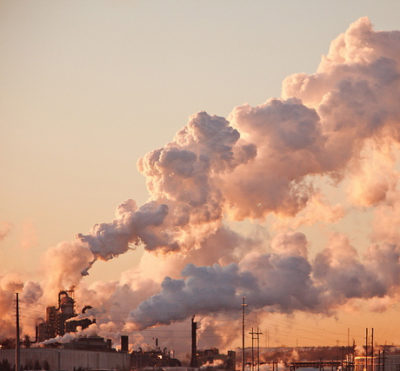 After another round of January Board of Directors and Stationary Source Committee meetings, the Bay Area Air Quality Management District (BAAQMD) remains committed to the timeline for a May 2017 vote on Rule 12-16, the refinery emissions cap. The challenge through May is to keep up momentum for Rule 12-16 adoption and not get distracted by the latest proposal introduced as an alternative.
After another round of January Board of Directors and Stationary Source Committee meetings, the Bay Area Air Quality Management District (BAAQMD) remains committed to the timeline for a May 2017 vote on Rule 12-16, the refinery emissions cap. The challenge through May is to keep up momentum for Rule 12-16 adoption and not get distracted by the latest proposal introduced as an alternative.
BAAQMD staff introduced a concept paper for a new approach in Rule 13-1, a refinery greenhouse gas (GHG) cap based on emission intensity, which is the amount of CO2 emitted per barrel of oil processed. Although BAAQMD staff presented a timeline for August 2017 adoption of Rule 13-1, their concept paper states that the rule would only include a methodology for calculating the emission intensity. Actual cap values would come at some unspecified point in 2018.
In concept, an emission-intensity limit could also prevent refineries from transitioning to more energy intensive and polluting tar sands for their crude supply. Given the complete lack of any detail for the emission intensity approach and the vagueness of its timeline, however, it is difficult to make a thorough assessment of the value of such an approach. Again, a key issue remains instituting a cap on emissions as quickly as possible, in order to set a baseline on emissions today. The longer we wait to establish a baseline, the more time refineries have to complete high-value, large-scale infrastructure projects required to process dirty tar sands oil. Delays on setting a baseline will lock in these projects for decades, setting the course for higher emission baselines once a cap is actually implemented.
It must also be noted that Rule 13-1 only addresses GHG emissions; it does not place any restrictions on particulate matter or toxic (sulfur and nitrogen oxides) emissions. Thus it relies on using GHG restrictions as a stand-in to limit increases in combustion products that have a direct and immediate local health impact on frontline communities. BAAQMD staff had actually briefly raised the proposal of an emissions intensity cap last year, then abruptly dropped the issue due to the refineries’ refusal to release “proprietary” throughput data. So any consideration of such an approach must include complete public transparency on all refinery throughput data used in any calculation of emission intensity values.
The approach of Rule 13-1 should be evaluated as a complement or alternative to Rule 12-16, as part of the Environmental Impact Report (EIR) required for Rule 12-16. In reality, a combination of the two approaches might be the strongest way to prevent future increases in GHG, particulate, and toxic emissions by refineries. An emissions-intensity cap restricts the transition to dirtier tar sands, independent of the throughput level of the refineries. Theoretically, under Rule 12-16’s total emissions cap, if refineries reduced total throughput, they could go to a higher-emissions-per-barrel crude slate. On the other hand, an intensity cap places no restrictions on the throughput level of the refineries. Even as California's demand for fossil fuels falls in the future (as we achieve our overall GHG-reduction goals) refineries could maintain or increase total throughput for export, making California the “gas station for the Pacific.” A total emissions cap would prevent this. Thus, the ideal situation may be some combination of the two approaches.
WhatYouCanDo
As of today, BAAQMD Stationary Source Committee and Board of Directors meetings for February are cancelled. That leaves March as the next critical moment in this campaign — when the Board has committed to release the Draft Rule, EIR, and Socioeconomic reports for Rule 12-16. Our demands at this point are simple:
- Meet all timeline commitments for release of Rule 12-16.
- Consider impacts of an emissions-intensity approach under the required evaluation of alternatives within the EIR of Rule 12-16.
- Commit to an accessible time and place for meetings in frontline refinery communities to respond to the March releases of Rule 12-16.
Send this message to the BAAQMD Board here.
We are now in the final push to win this four-year campaign for refinery emissions caps. Ongoing work to expand community support and educate newly elected Board members will be critical in coming months. Once we win this campaign, we can send a message to the entire nation: whatever fantasies the Trump administration has about expanding coal and tar sands production, these dirty fossil fuels will not come into California refineries and ports!
Key Upcoming Dates:
- March 3: Release of rules, staff analysis, socioeconomic analysis
- May 17: Board hearing and vote on final rules
Reposted with permission from the Sunflower Alliance.